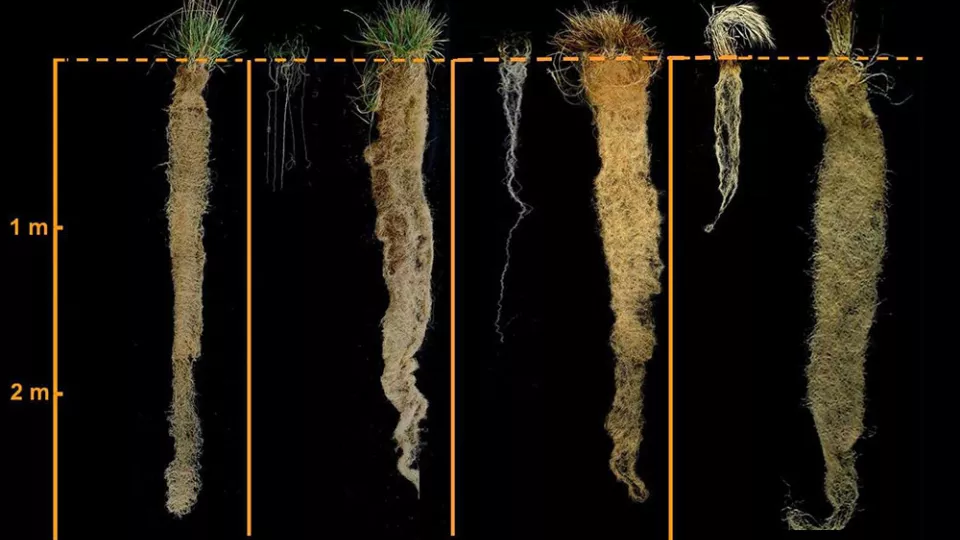The new facility, funded by the European Research Council (ERC Advanced Grant) and Formas, is focused on exploring perennial agricultural crops and their potential to transform modern agriculture. Here, researchers will measure the exchange of greenhouse gases between the atmosphere and agriculture in real time in two parallel cropping systems. One of these systems uses the newly domesticated cereal KernzaTM, also known as Intermediate wheatgrass, while the other follows a conventional crop rotation with crops such as wheat, sugar beet, barley and oilseed rape.
A new cereal
The research facility will play an important role in understanding the ecosystem services and climate benefits that perennial crops can provide. The new cereal Kernza, or Intermediate wheatgrass, is representing the perennial crops:
- Kernza has a root system many times larger than wheat (see figure), which has several ecological benefits. From a climate point of view, we are looking in this project at carbon storage in the soil, which can be increased both by the plant and also by reduced ploughing. Perennial crops like KernzaTM can also help reduce erosion, cope better with drought and improve soil structure," says Jonas Ardö, Professor of Physical Geography and Ecosystem Science at Lund University.
Climate benefits and ecosystem services
The research facility will play a key role in understanding the ecosystem services and climate benefits that perennial crops can provide.
- Kernza has been bred since the 1970s, so it is a short time compared to thousands of years of deliberate breeding. So far, the harvest of Kernza is about one tenth of what wheat yields, but development is rapid and in a few decades it is expected to have improved" says Jonas Ardö.
The facility was officially inauggurated in Alnarp on October 26, 2023
Read more about the project:
Read more on the department web Perennial project
Descriptions and info i the Research portal:


